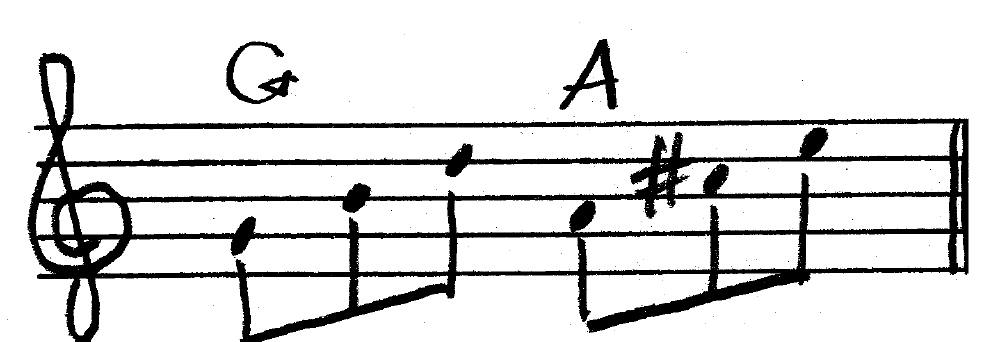Hey, there, fellow jazz saxophonists and other jazz instrumentalists, I haven’t forgotten you! Even as I’ve been blogging about the big, late-October weather system that has been blowing through the Great Lakes, I’ve been contemplating my next post for sax players. I hope you’ll find that what follows was worth waiting for.
A riff from Jimmy Forrest
Back in my college days, Basie tenor man Jimmy Forrest lived in Grand Rapids. Naturally, I owned one of his albums, a vinyl LP titled “Black Forrest.” It was a hard-swinging, straight-ahead collection of tunes that showcased Jimmy’s ability to deliver both high-testosterone bebop and wonderfully lyrical balladry. The album included a heaping helping of blues, and in one of those blues, Jimmy worked into his solo a lick reminiscent of the old Jetsons cartoon theme song, which sounded something like this:
I liked that lick, and I incorporated it into my blues playing. The thing that made it sound so hip was the sharped fourth–aka the flat five, though in this application, that’s not the correct theoretical term–which defines the lydian sound.
What makes lydian sound so lydian?
Good question. There are two scales that can be considered lydian: the traditional lydian church mode built off the fourth degree of the major scale, and the lydian flat seven scale, also known as the lydian dominant.
The term “lydian dominant” is a bit confusing, since each word, “lydian” and “dominant,” suggests a function of the scale that cancels out the other one. In this case, however, “lydian” refers to the raised fourth scale degree, and “dominant” describes how the scale and its characteristic chord function. The more accurate term is actually “mixolydian sharp four,” since the scale is used the same way that a standard mixolydian mode is used: as a scale choice for dominant seventh chords.
Whatever you wish to call it, the lydian flat seven sound is defined by its raised fourth scale degree. But other scale options for dominant seventh chords also contain the raised fourth/flatted fifth. The half/whole-step diminished scale and the diminished whole tone scale both come instantly to mind. What makes the lydian flat seven different?
Its consonance with an unaltered dominant seventh chord.
Following is a G lydian flat seven scale, which you would use over a standard G7 chord:
Note that this scale neither raises nor lowers the ninth of the G7, nor does it alter the fifth, nor does it lower the thirteenth. Only the fourth degree gets raised a half-step to create the characteristic lydian sound. The raised fourth doesn’t clash with the third of the dominant chord the way that the unaltered third of the standard mixolydian mode does, in effect making the lydian flat seven scale the more consonant scale.
Triad superimposition
When you build triads off of the first and second degrees of the lydian flat seven scale, each triad is major in quality. For instance, a G lydian flat seven scale gives you the following:
Note that the first triad outlines the foundational notes of the G7 chord, minus the seventh, while the second triad emphasizes the ninth, raised fourth, and thirteenth. Thus, a quick way to emphasize the lydian sound over a dominant seventh chord is to superimpose a major triad whose root is a whole step above the chord root. In other words, if you’re soloing over a Bb7, play a C major triad; if you’re working with a D9, play an E major triad, and so forth.
By the way, since neither triad includes the seventh of the scale, you can apply the above superimposition equally well to both the G7 and Gmaj7 chords.
Major triad couplets in inversion for the lydian sound
Okay, time to start getting the stuff I’ve just covered into your fingers and your ears. Click on the exercise to your right to enlarge it. It’s a practical extension of the superimposition principle I’ve just described that takes you through different inversions of the triad couplets based on the G lydian flat seven scale. As always, take the exercise up and down the full range of your instrument, and through all twelve keys.
I’ll have more to say about the lydian flat seven scale, but this ought to keep your woodshed smoking for a while.
Visit my jazz page for more articles on jazz improvisation, jazz theory, and saxophone playing.





